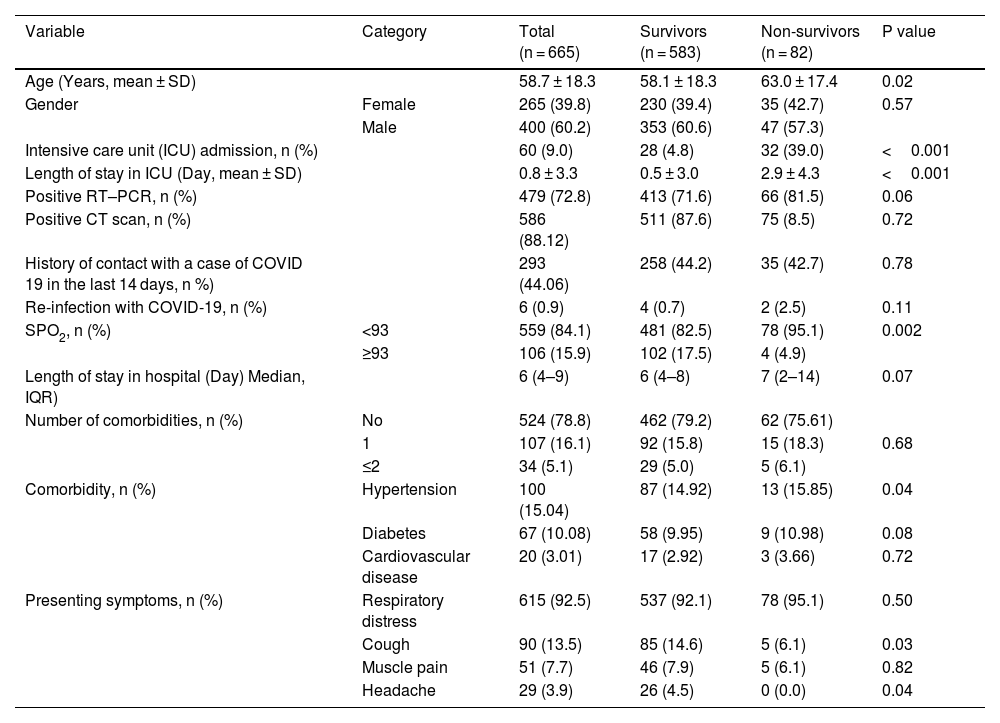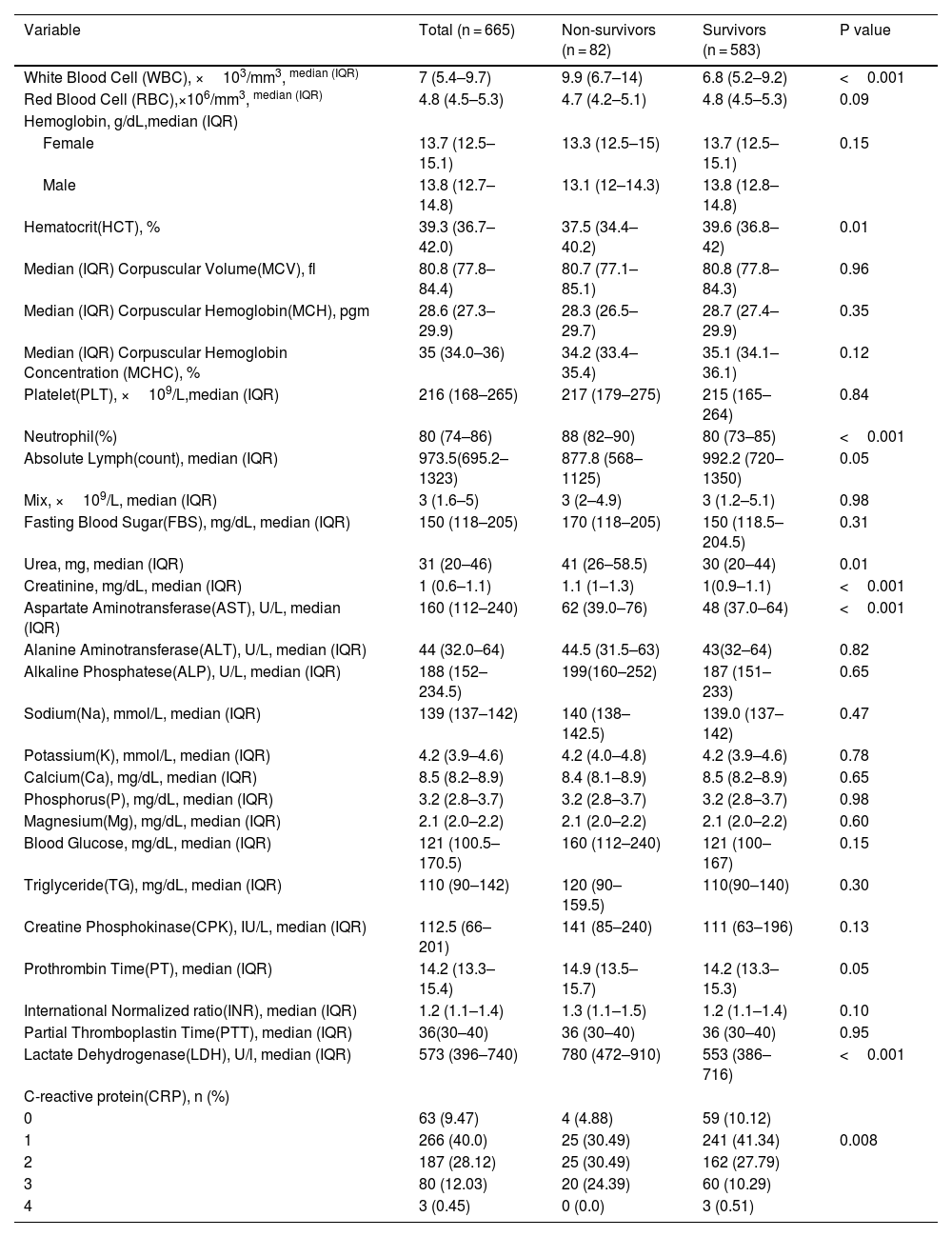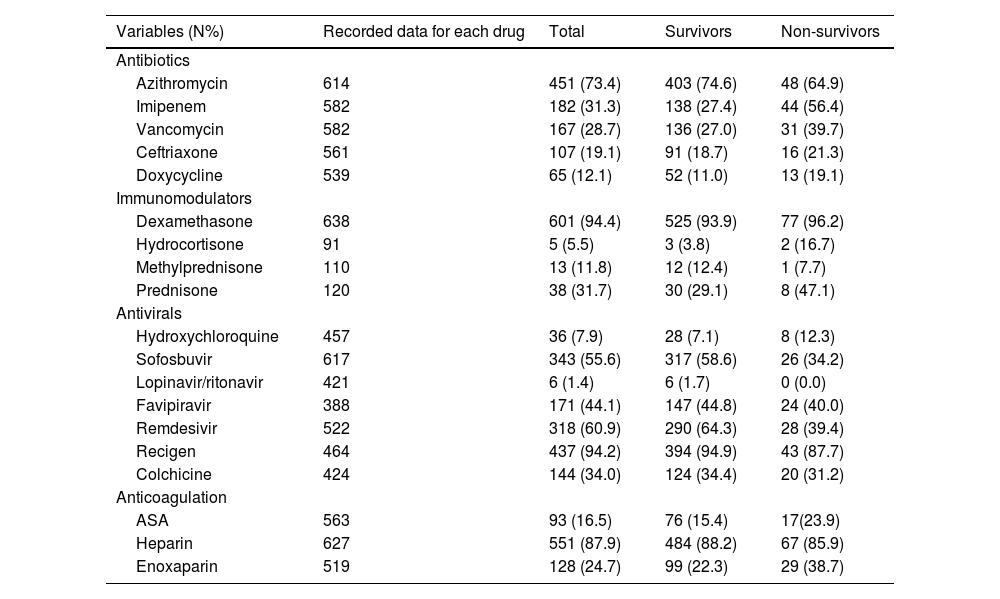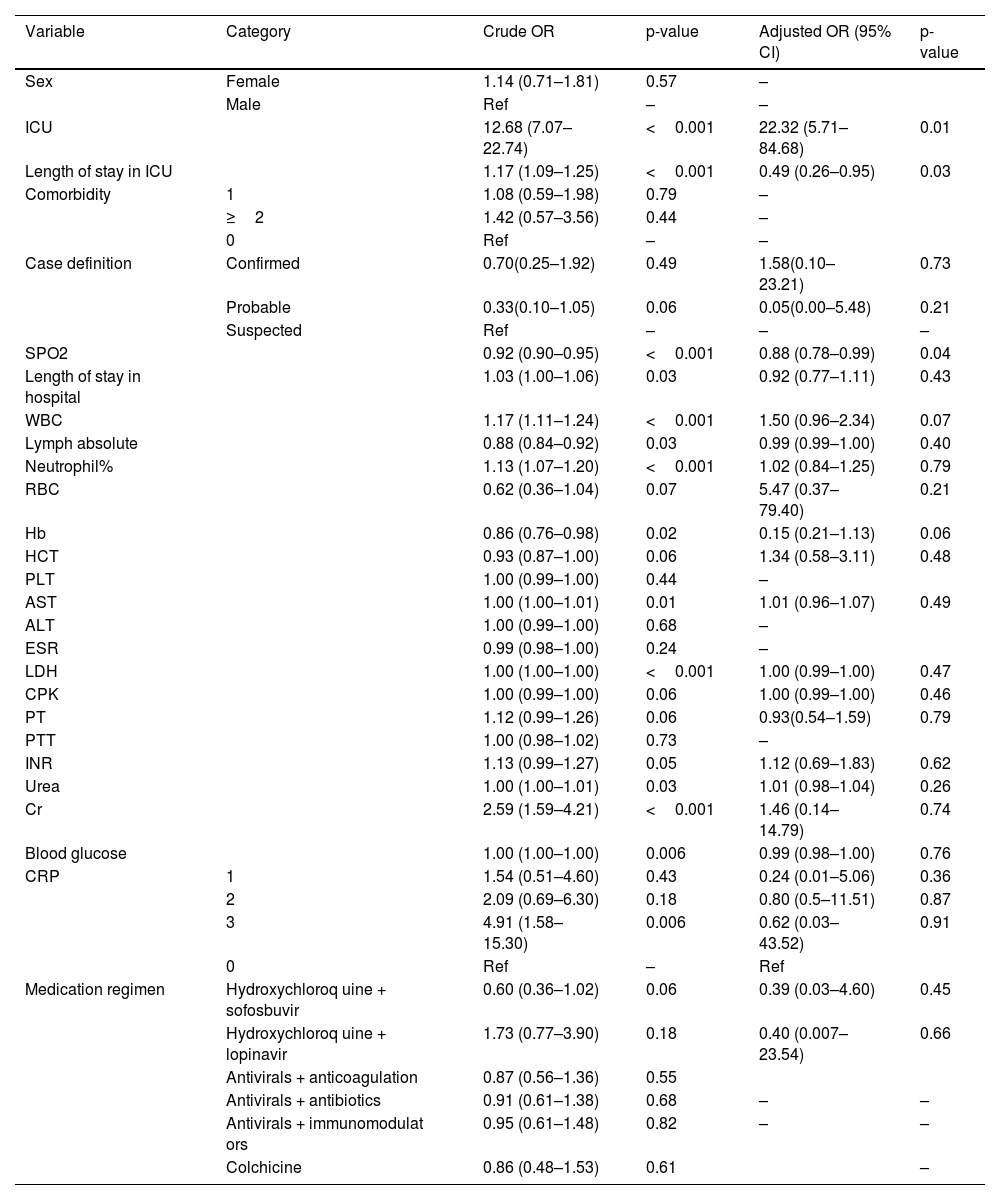
Edited by: Dra. Núria Torner CIBER Epidemiologia y Salud Publica CIBERESP Unitat de Medicina Preventiva i Salut Pública Departament de Medicina, Universitat de Barcelona
More infoCOVID-19 is a disease caused by severe acute respiratory syndrome coronavirus 2 (SARS-CoV-2). The characteristics of this infectious disease vary from a country to another and from one peak to the next. The aim of the present study was to describe the COVID-19 patients hospitalized in Kermanshah, a city in the west of Iran, in the third peak of the disease and to identify in-hospital mortality determinants in this disease.
MethodsIn this retrospective study, the clinical and demographic characteristics, laboratory findings, prescribed treatments and outcome of all COVID-19 patients (definitive, suspected, and probable) were collected from the medical records department of Farabi Hospital affiliated with Kermanshah University of Medical Sciences, Kermanshah, Iran from 22 October to 20 November 2020.
ResultsIn total, 665 COVID-19 patients (265 females and 400 males, mean age: 58.7 years) were enrolled, including 479 confirmed (72%), 156 probable (23.5%), and 30 suspected cases (4.5%). About 84% of the patients presented with low oxygen saturation levels. The most common comorbidities were hypertension (15%), diabetes (10%), and cardiovascular disease (3%). The median (IQR) length of hospital stay was 6 (4–8) and 7 (2–14) day in discharged and deceased patients, respectively. Eighty-two out of 655 patients admitted to the hospital and 39 of the 60 patients admitted to the ICU died. In total, in-hospital mortality rate was 12.33%. Regarding lab variables, in the adjusted model, no significant difference was observed between discharged and deceased patients.The results of multivariable logistic regression showed that each one-unit increase in oxygen saturation (SPO2) increased the odds of survival by 0.88 times (95% CI 0.78–0.99, p = 0.043). Moreover, each one-day increase in the length of ICU stay reduced the odds of mortality by 0.49 times (95% CI 0.26–0.95, p = 0.035).
ConclusionHospitalized COVID-19 patients were generally more ill during the third peak so that about 85% of the patients had SPO2 < 93%. The in-hospital mortality rate was also high. Demographic and paraclinical variables (except SPO2 level) were not suitable predictors of mortality.
COVID-19 es una enfermedad causada por el síndrome respiratorio agudo severo coronavirus 2 (SARS CoV 2). Las características de esta enfermedad infecciosa varían de un país a otro y de un pico a otro. El objetivo del presente estudio fue describir a los pacientes con COVID-19 hospitalizados en Kermanshah, una ciudad al oeste de Irán, durante la tercera ola pandémica e identificar los determinantes de mortalidad hospitalaria de esta enfermedad.
MétodosEn este estudio retrospectivo, las características clínicas y demográficas, los hallazgos de laboratorio, los tratamientos prescritos y el resultado de todos los pacientes ingresados por COVID-19 (definitivo, sospechoso y probable) se recopilaron a partir de los registros médicos del Hospital Farabi afiliado a la Universidad de Medicina de Kermanshah. Sciences, Kermanshah, Irán, del 22 de octubre al 20 de noviembre de 2020.
ResultadosEn total, se registraron 665 pacientes ingresados por COVID-19 (265 mujeres y 400 hombres), de los cuales 479 casosfueron confirmados (72%), 156 probables (23.5%) y 30 sospechosos (4.5%). La edad promedio del total de casos fue de 58,7 años. Alrededor del 84% de los pacientes presentaron niveles bajos de saturación de oxígeno. Las comorbilidades más comunes fueron hipertensión (15%), diabetes (10%) y enfermedad cardiovascular (3%). La mediana (RIC) de estancia hospitalaria fue de 6 (4–8) y 7 (2–14) días en pacientes dados de alta y fallecidos, respectivamente. El 82 de los 655 pacientes ingresados en el hospital y el 39 de los 60 pacientes ingresados en UCI fallecieron. En total, la tasa de mortalidad hospitalaria fue del 12,33%. En cuanto a las variables de laboratorio, en el modelo ajustado no se observaron diferencias significativas entre los pacientes dados de alta y los fallecidos. Los resultados de la regresión logística multivariable mostraron que cada aumento de una unidad en la saturación de oxígeno (SPO2) aumentó las probabilidades de supervivencia en 0,88 veces (IC del 95% 0,78-0,99, p = 0,043). Además, cada aumento de un día en la duración de la estancia en la UCI redujo las probabilidades de mortalidad en 0,49 veces (IC del 95%: 0,26-0,95, p = 0,035).
ConclusiónLos pacientes hospitalizados con COVID-19 generalmente estaban más enfermos durante el tercer pico, de modo que aproximadamente el 85% de los pacientes tenían SPO2 < 93%. La tasa de mortalidad hospitalaria también fue alta. Las variables demográficas y paraclínicas (excepto el nivel de SPO2) no fueron predictores adecuados de mortalidad.









